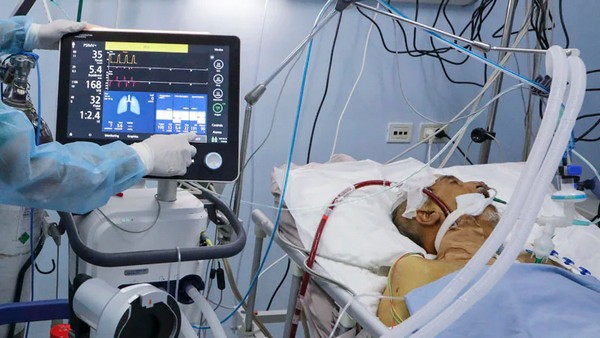
Extracorporeal membrane oxygenation (ECMO) treatment, also known as extracorporeal life support, provides life support to people whose hearts and lungs are not functioning correctly. ECMO treatment is used in critical situations to temporarily help a person’s body. Medical conditions like heart attacks, inflammation of heart muscles, severe hypothermia, ARDS, etc., require ECMO. However, the treatment is not always 100% successful. If you suffer from any conditions where treatment is needed, you must contact the nearest hospital immediately.
What is ECMO Treatment?
ECMO treatment or Extracorporeal membrane oxygenation involves an external machine that takes in the blood to filter the air. It removes the carbon dioxide and transports the oxygenated blood back into the body. The membrane-oxygenator in the ECMO machine is used for filtering the blood. The functionality of this device is similar to that of a heart-lung by-pass device. Blood flows back into the heart through tubes connected to the machine and body. ECMO treatment is of two types; VA ECMO and VW ECMO. VA ECMO is for both veins and arteries problems. VW ECMO is only for the lungs, and it connects one or more veins.
How is ECMO Treatment Conducted?
The doctors sedate and medicate the patient to minimize pain. Next, an anticoagulant is administered to reduce blood clotting. Next, ECMO catheters are inserted into the veins or arteries, depending on the type of ECMO treatment. Next, an X-ray machine ensures the correct position of the catheter. A doctor, as well as a nurse, will monitor ECMO patients. Stopping the ECMO treatment also requires a surgical procedure to de-attach the tubes from the body. Finally, a doctor will stitch the part of the body where the tubes are attached.
When Do You Need ECMO Treatment?
You need ECMO treatment when you suffer from the heart or lungs are not functioning correctly.
| Heart conditions where ECMO treatment is needed | Lung conditions where ECMO treatment is needed |
| Heart attack | ARDS |
| Heart muscle disease | COVID-19 |
| Inflammation of the heart muscle | Pulmonary embolism |
| Sepsis | Defect in diaphragm |
| Severe hypothermia | Flu |
| Cardiogenic shock | Pneumonia |
Side Effects and Risks Involved in ECMO Treatment
ECMO treatment can save your life but is not always 100% successful. There are certain risks while taking ECMO. A doctor on your ECMO team will make you aware of ECMO treatment’s risks and side effects. These include:
- Bleeding – This is the most common side-effect of ECMO. Bleeding can occur inside the body and outside the body as well. Bleeding near or around the brain can be fatal, and hence you must take appropriate caution. Ultrasound helps in detecting bleeding.
- Infection – Catheters placed into the body can carry germs and result in an infection in the body.
- Blood Clot – There is a risk of blood clots and air bubbles appearing inside the ECMO catheters.
- There is an increased chance of a stroke or brain hemorrhage if bleeding around the brain.
Results and Success of ECMO Treatment
ECMO is a beneficial treatment method; however, the success rates and chances of the patient being wholly cured are not always 100%. When your physician turns down the pump flow, that means you are recovering, and the heart and lungs can do more of the work themselves. Therefore, it is an indicator that your ECMO treatment is successful:
- ECMO trialing – your team of doctors will talk about reducing ECMO support or even turning it off for a while to see if your body can sustain itself. If it can’t, you will be put back on ECMO until you are completely okay.
While ECMO treatment may sometimes be successful, there can be a few harmful side effects to your body. These are a few of them:
- If you had low oxygen levels before ECMO, it might lead to the failure of other organs in your body.
- After ECMO, patients often require extra oxygen as well.
- Some babies have trouble feeding (sucking and swallowing) after ECMO treatment.
To Conclude
If you suffer from conditions where your heart or lungs are not working correctly, you must consider using ECMO treatment. However, the results of ECMO are not always 100% successful. Therefore, it would be best if you took the advice of doctors and nurses before taking ECMO treatment. You must follow their advice and take the necessary precautions. If you are suffering from any condition where your heart or lungs are not functioning correctly, consult a doctor if ECMO is needed. Then, you must approach the best hospital that can efficiently provide you with ECMO treatment.
